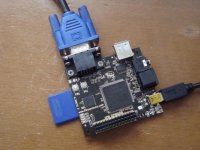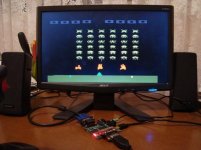Defiant1Dave
Member
That has got to be the coolest project I've seen in a long time! I can think of a LOT of things to do with that baby! As soon as they are available, I want one.
Hi Valentin!
You did an amazing job with that 8052--far more than I would have thought was possible. Thank you for your hard work.


My small contribution is that some of my code was used to flush out bugs in the emulation.
The AX-2005. It was just a little too cramped. Lack of addressability was forcing some compromises.
My small contribution is that some of my code was used to flush out bugs in the emulation.
If you think about it most of us get excited when somebody does a cool demo, a small hardware project, or some useful software. Valentin created an entire computer system on a small board. And he designed it to use an emulation layer such that the very architecture of the machine which you emulated could be changed within a few seconds. Don't like the Tandy 1000 emulation? Load the EGA code instead. Or even emulate an Apple ][. The design, implementation and software all came from Valentin - very few people can do all of that.
Same, I also was able to help him fix a bug. I came across a bug in my emu Fake86 almost 2 years ago where it would hang on certain x87 FPU escape codes, and found Valentin had the same problem on the Flea86. I realized both of us were not parsing the addressing mode byte after the escape codes, and it sometimes caused the program counter to get misaligned.
Is it possible to emulate the out-of-production chip using an FPGA?
